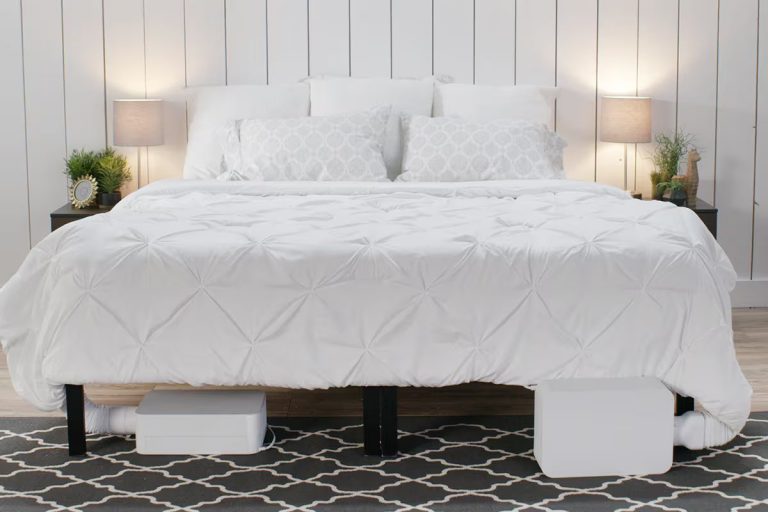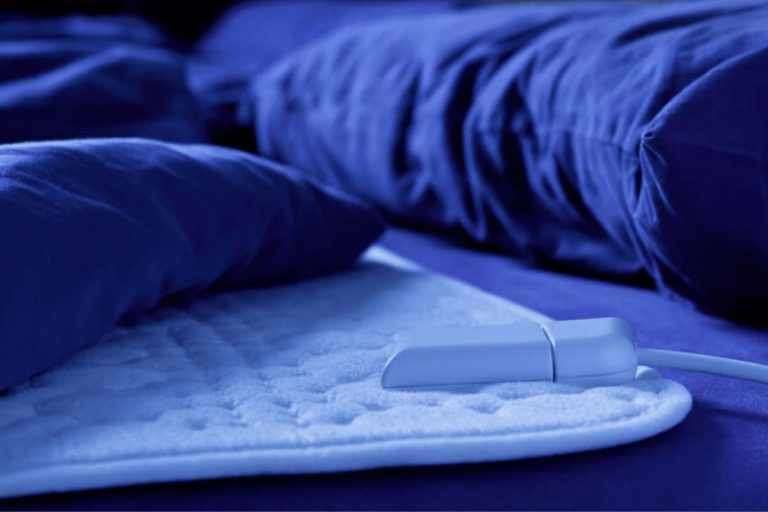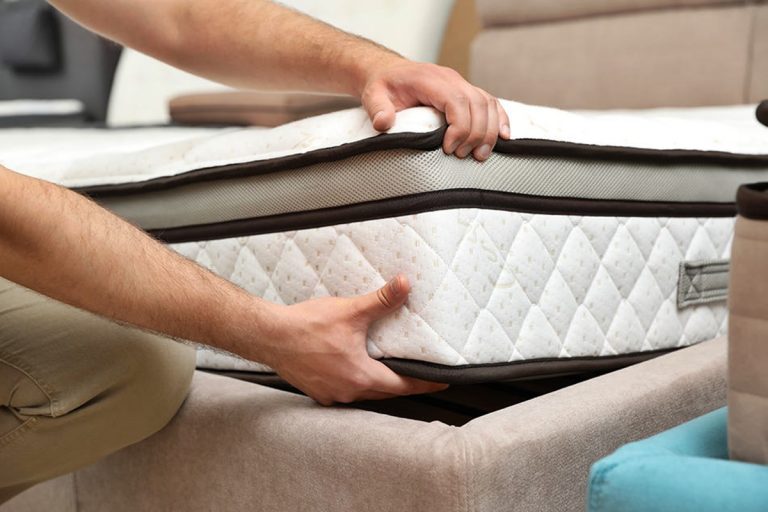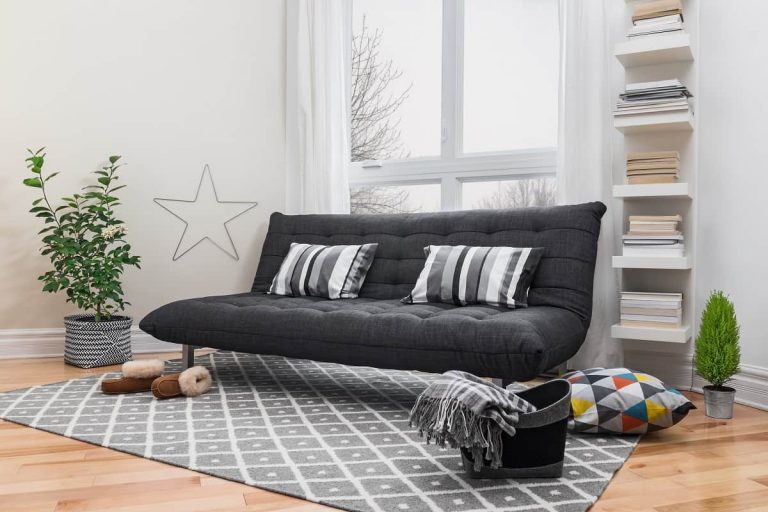Have you ever gone to bed and tossed and turning, unable to get a good night’s sleep?
If so, then try sleeping on your side. There are many reasons sleeping on your side is better for getting a restful night of sleep. However, the most important reason is that it helps keep our airways open while we’re resting.
But what about your arms? If you’ve slept on your side, you most likely had a morning where you woke up with a sore arm. That happened because you’ve slept on your arm. Your body’s weight pressed on the arm, causing discomfort.
There are many ways to position your arms while you sleep to avoid this issue. It’s important because, even if you’re sleeping, your body feels the discomfort. If you do it for many nights, your sleep quality will suffer.
Physics teach us that for each action, there is an equal and opposite reaction. When your body is pressing on the arm, the arm is trying to pushing the body away. This engages the arm’s muscles, causing stiffness in the morning. You want your body to be as relaxed as possible during sleep, so you should avoid any pressure.
In this article, we will see how to keep your arms away from your body while you sleep on your side. If you’ve been waking up with stiff muscles, numb arms, and sore shoulders, this guide is your ticket to a fantastic night’s sleep.
Why Is Sleeping on Your Arm Bad?
Sleeping on your arms is uncomfortable and can cause acute pain in the long run. You want to keep your arms away from your body at night. The issues all stem from the pressure of the arms pushing against our body.
This causes compression of the nerves and decreases blood flow. It’s not the end of the world if it happens once in a while, but it can cause lasting damage if prolonged.
Editor’s note: these problems also happen if you sleep with your arm under your pillow. We talk about it in more detail later in the article.
Disrupt Sleep and Cause Pain
Sleeping on your arm prevents you from having a restful night’s sleep by causing discomfort throughout the body. We can see this when we wake up with stiff muscles or sore limbs because of pressure that was put on them while sleeping. If you’ve ever woken up and felt like your body was totally out of whack, it may be because you slept on an arm.
Your arms go to sleep when they’re pressed against the body for a long period. In fact, this happens so often that some people have reported having pins and needles in their arms upon waking.
Also, sleeping on the arm prevents you from having a restful night because it makes your body work to push off of the pressure. This engages muscles that should be relaxed while resting and disrupts sleep throughout the entire night.
Also Read:
Prevent Relief from Air Pressure Inside Your Lungs
As we’ve already discussed, sleep is important for a variety of reasons. One reason it’s so crucial to have a full night of restful sleep is because your lungs need time and space to adjust throughout the breathing process.
When you lie on one side, there isn’t enough room in your throat for air pressure from inside the lungs to escape through either of the two airways. This makes it harder for your lungs to get rid of carbon dioxide while you sleep, which reduces oxygen intake and disrupts breathing throughout the entire night.
It’s important that we’re able to reduce pressure inside our bodies so that they can properly function through normal processes like eating, drinking water, exercising, etcetera. When your body cannot do that, it can have many negative side effects both during sleep and throughout the entire day.
Having arms pressing against your body doesn’t help with this pressure.
What is the Best Arms Position for Sleeping on Your Side?
There are countless ways to position your arms while you sleep. However, there are certain positions which make sleeping more comfortable than others. It’s up to you to figure out which position is right for you, but it may be helpful to consider what your options are before deciding.
There are three major ways that people sleep on their sides: with the arm under the pillow throughout, with one arm underneath and one arm resting above the head, or by having both arms away from the body.
If you’re used to sleeping with your arms above the pillow, it’s important that you gradually transition into a new position or else face issues like chronic pain and lack of sleep. You should go about changing how you rest in bed by choosing one arm at a time to place below the head while keeping the other out altogether.
When you’re ready to transition both arms, place one arm under the pillow while having the other away from your body. This may feel uncomfortable at first because it’s a unique position than what you are used to sleeping in. However, after an initial change period of about two weeks, this will become more comfortable and allow for better sleep.
While someone may naturally incline to choose one way or the other, it’s important to remember that everyone is different. Some people are most comfortable with both arms underneath their body, while others prefer resting them above their head through sleep.
There isn’t a right answer for how you should position your arms when sleeping on your side because it’s a preference.
However, make sure that your arms aren’t pressing against the body for extended periods of time throughout the night to prevent issues like pins and needles or chronic pain from forming in either arm. Instead, choose one way or another to place them while sleeping on your side so that they don’t affect how well rest is achieved.
Finding the Best Ways to Sleep on Your Side
Now that you understand all of your options, it’s time to choose how you want to sleep when lying down on one side. Before deciding which position is right for you, consider what would be easier to get comfortable and start sleeping through the night.
Once you’ve chosen how to position your arms, lay down on one side with that arm underneath the pillow or out of the way entirely through sleep. This will help prevent pain in either arm and improve blood flow to keep both limbs healthy while sleeping at night for a full eight hours without interruption.
When laying down on one side, you’ll want to make sure that your upper arm is tucked in close toward your body and not pressing against it. This will prevent pain from developing in the back, neck, arms or any other areas where pressure could be felt by laying down on one side with an arm pressed up against them for too long during sleep.
With Arms Under the Pillow
To achieve a comfortable sleep position on your side with arms under the pillow, start by placing that arm underneath before lying down. This will keep it from falling forward or away from your body as you doze off and rest throughout the night.
If you’re used to sleeping this way already but have been having issues, consider switching to this position for one arm at a time. That way, you can gradually adjust how your body feels while sleeping on one side by transitioning into the new position over two weeks’ worth of nights so that it doesn’t cause pain or discomfort when trying something different.
When lying down with the arm under the pillow, make sure that you position your upper body to keep you comfortable throughout the night. You should lie down on one side with knees bent to avoid putting too much pressure onto either hip by forcing them into an awkward position while sleeping at night.
Warning: this solution can still cause shoulder pain. It’s a slight improvement from sleeping with arms directly under the body, but it’s still suboptimal.
With Both Arms Out of the Way
If neither arm is under the pillow when lying down, place one arm under your head to keep it elevated and away from the body. This will help avoid putting pressure on that side of the neck or shoulder throughout sleep so that you can wake up feeling rested with no pain in either area.
When laying down with both arms out, make sure that they are placed above the pillow instead of alongside it if you’re a stomach sleeper. This will allow the kidneys to rest comfortably as you doze off and sleep throughout the night without pain or discomfort from having them pressed against your body for too long.
While making sure that arms are elevated is important, don’t have them hanging down toward the headboard, since this can cause strain on the neck. If you need to, try placing a pillow underneath each arm at night so that they are elevated enough for comfort without putting too much pressure on the spine or shoulder area while sleeping on your side with both arms out of the way.
Hugging a Pillow
If you don’t like the idea of placing your arms underneath either pillow or just want to try something different, try hugging a single, firm pillow while sleeping on one side. This will keep both arms out of the way and fully elevated so that they aren’t pressed against anything throughout sleep without having them fall forward toward the headboard when trying to lie down with them out of the way entirely.
This position is also ideal for people who move around a lot while sleeping at night since it’s easier than trying to reposition both arms once they’ve been elevated away from your body with pillows. If you’re someone that moves between sides frequently, hugging one pillow will keep your arms in place without needing change every time you switch positions.
Another advantage of sleeping by hugging a pillow is that it releases oxytocin in the brain, which is the happiness hormone. This means that it helps you sleep better and feel rejuvenated once waking up.
Editor’s note: If sleeping with arms under the pillow or both out of the way doesn’t work for you, try hugging one side while laying down on your back instead. This will keep arms elevated enough to avoid pressure along any parts of them throughout sleep without having them fall forward toward the headboard since you’ll be hugging one pillow instead.
Pillows Are Your Greatest Ally…or Your Worst Enemy
Pillows affect our sleep. They can be your greatest ally at night, but also your worst enemy if you use them wrong. If you’ve been suffering from neck or shoulder pain while sleeping on one side and the options above don’t work for you, it may just be time to give up pillows altogether and try a unique position entirely.
When trying to find out what works best for sleeping with arms at night, it ultimately comes down to finding something comfortable and something that will keep you from waking up with any pain at all.
For side sleeping, the best way to use your pillows is to have a soft and short one under your head, and then a firm one between your legs. You don’t need a neck pillow, as side sleeping is easier on the neck.
With pillows being a choice, everyone prefers different types and they won’t work for you.
If this makes little sense to you or is too much of a change, consider using it when sleeping on your back instead, since the pressure points are less likely to be affected by arm placement in that position.
Conclusions
Sleeping with arms out of the way may take some time to get used to. But it’s worth trying different positions until you find one that works best for your needs. The wrong positioning causes discomfort and can lead to pain when waking up in the morning. So, working towards getting rid of all arm pressure while sleeping is the best choice.
Try placing a pillow underneath each arm at night so that they are elevated enough for comfort. This way, you avoid putting too much pressure on the spine or shoulder area. If hugging one pillow is more comfortable and keeps arms out of the way throughout sleep instead, go for it! It’s all about finding what works best for you.
Ultimately, what matters is your comfort. Each person is unique in sleep. Try out the methods we described in this article. Don’t fret if one of them doesn’t work. Just move onto the next one. Eventually, you’ll find the combination that best works for you.
Also Read:





